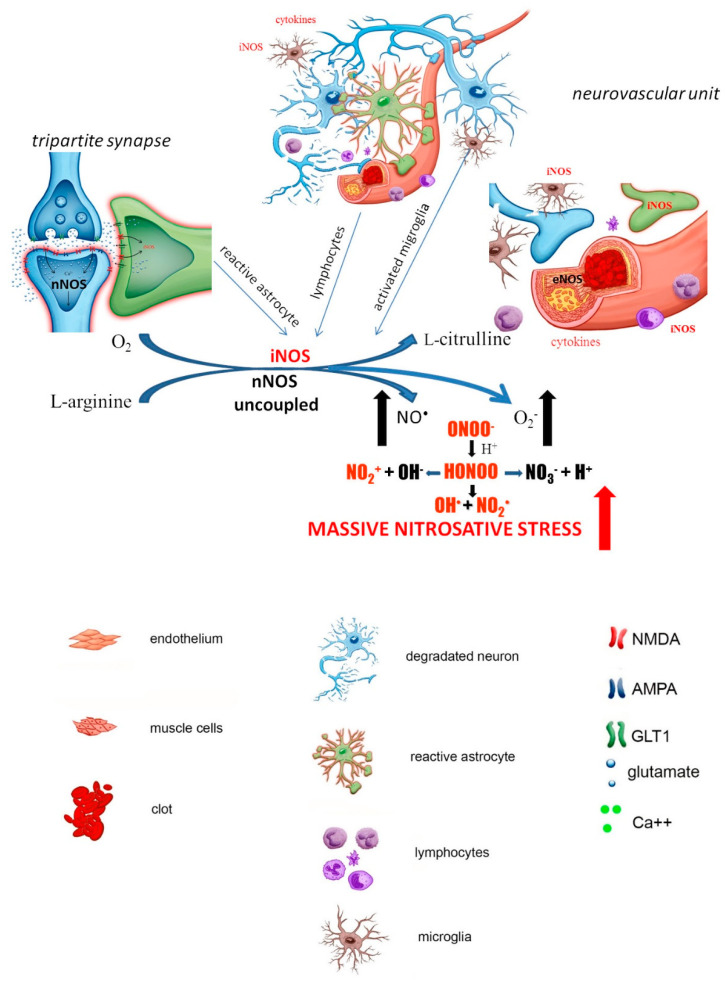Figure 3.
Late stage of the ischemia (delayed neuronal damage (begins several hours after episode and reaches maximal level after 24–48 h): parts of dead neurons attract leucocytes and microglia, which accumulate in the place of the stroke releasing cytokines that start to induce the production of iNOS in these cells. Additionally, astrocytes undergo morphological, molecular and functional remodeling in response to injury and also becoming a source of proinflammatory cytokines and iNOS. Thus, the cascade of events triggered by ischemia leads to massive production of cytokines and accumulation of proinflammatory cells with high activity of iNOS. Under these circumstances, in the strong deprivation of tetrahydrobiopterin (BH4) and/or substrate L-arginine, all uncoupled NOS isoforms generate simultaneously high amounts of both NO• and O2•− favoring production of ONOO−. The uncoupling of NOS isoforms can be additionally potentiated by O2•− overproduction from other enzymatic sources in the cells accumulated in ischemic lesion, such as upregulated NAD(P)H-oxidase. It finally results in the generation of massive ROS/RNS and a vicious molecular circle is formed which aggravates the neurodegeneration process.

